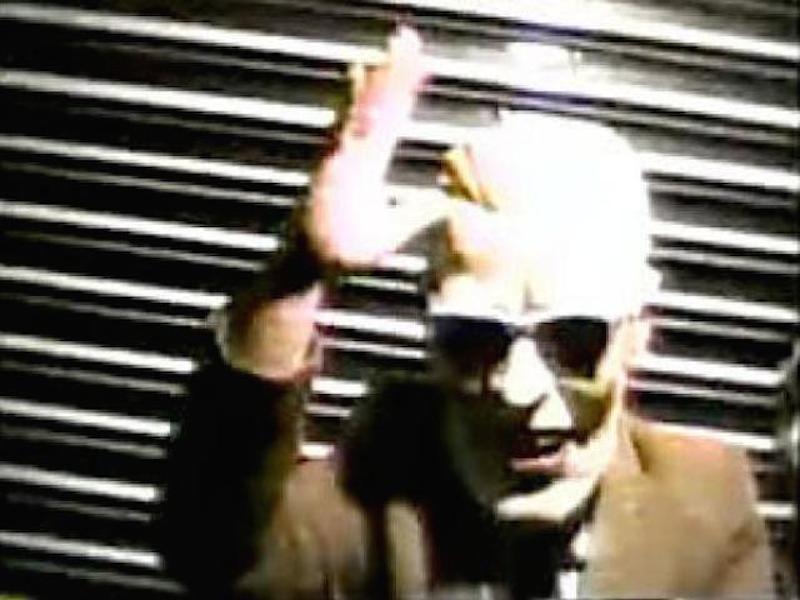

VOICE OF MAX HEADROOM SERIES
The hacker made references to Max Headrooms endorsement of Coca-Cola, the TV series Clutch Cargo, WGN anchor Chuck Swirsky and "all the greatest world newspaper nerds", a reference to WGNs call letters, which stand for "Worlds Greatest Newspaper". news broadcast the second occurred around two hours later, for about 90 seconds during PBS affiliate WTTWs broadcast of Doctor Who. The first incident took place for 25 seconds during the sports segment of WGN-TVs 9:00 p.m. The stations broadcasts were interrupted by a video of an unknown person wearing a Max Headroom mask and costume, accompanied by distorted audio. The rights to the Max Headroom character were held by All3Media as of November 2007.Ī broadcast signal hijacking of two television stations in Chicago, Illinois was carried out on November 22, 1987, in an act of video piracy. These modulations also appear in live performances. His chaotic speech patterns are based upon his voice pitching up or down seemingly at random, or occasionally becoming stuck in a stuttering loop. This background was a piece of CGI footage that had been generated for one of Morton and Jankels ad agencys commercials, later, in the United States version, generated by a Commodore Amiga computer. Preparing the look for filming involved a four-and-a-half-hour session in make-up, which Frewer described as "gruelling" and "not fun", likening it to "being on the inside of a giant tennis ball." Only his head and shoulders were depicted, usually superimposed over a moving geometric background. Maxs image was actually that of actor Matt Frewer in latex and foam prosthetic make-up with a fiberglass suit created by Peter Litten and John Humphreys. Computing technology in the mid-1980s was not sufficiently advanced yet for a full-motion, voice-synchronized human head to be practical for a television series. Other than the publicity for the character, the real image of Max was not computer-generated. The classic look for the character is a shiny dark suit often paired with Ray-Ban Wayfarer sunglasses. The name originated well before the other aspects of the character from George Stone, who said "Max headroom was over the entranceway of every carpark in the UK. HEADROOM: 2.3 M" an overhead clearance of 2.3 metres suspended across a car park entrance. The characters name came from the last thing Carter saw during a vehicular accident that put him into a coma: a traffic warning sign marked "MAX. The AI of Max Headroom was shown to have been created from the memories of crusading journalist Edison Carter.

The background story provided for the Max Headroom character in his original appearance was rooted in a dystopian near-future dominated by television and large corporations, devised by George Stone and eventual script writer Steve Roberts. The two also wrote the 1985 book in his voice, Max Headrooms Guide to Life.
VOICE OF MAX HEADROOM MOVIE
They created dialogue for Maxs appearances in the TV movie and TV shows, which the actor added to through improvisation. At first sight hell ask about that blackhead on your nose." Producer Peter Wagg had already hired writers David Hansen and Paul Owen to construct Max Headrooms "whole persona", which Morton described as the "very sterile, arrogant, Western personification of the middle-class, male TV host". Max always assumes a decade long friendship on the first meeting. The actor took inspiration from The Mary Tyler Moore Show s Ted Baxter, saying in a 1987 interview, "I particularly wanted to get that phony bonhomie of Baxter. Matt Frewer was chosen based on his "unbelievably well-defined features" that Jankel noticed in a casting polaroid, and from his comedic improvisation skills that he demonstrated in a ten-minute audition. For his role of hosting a music video program, Max Headroom was conceived of by creator Rocky Morton as "the most boring thing that I could think of to do.a talking head: a middle-class white male in a suit, talking to them in a really boring way about music videos", also deciding that he should be computer-generated.


 0 kommentar(er)
0 kommentar(er)
